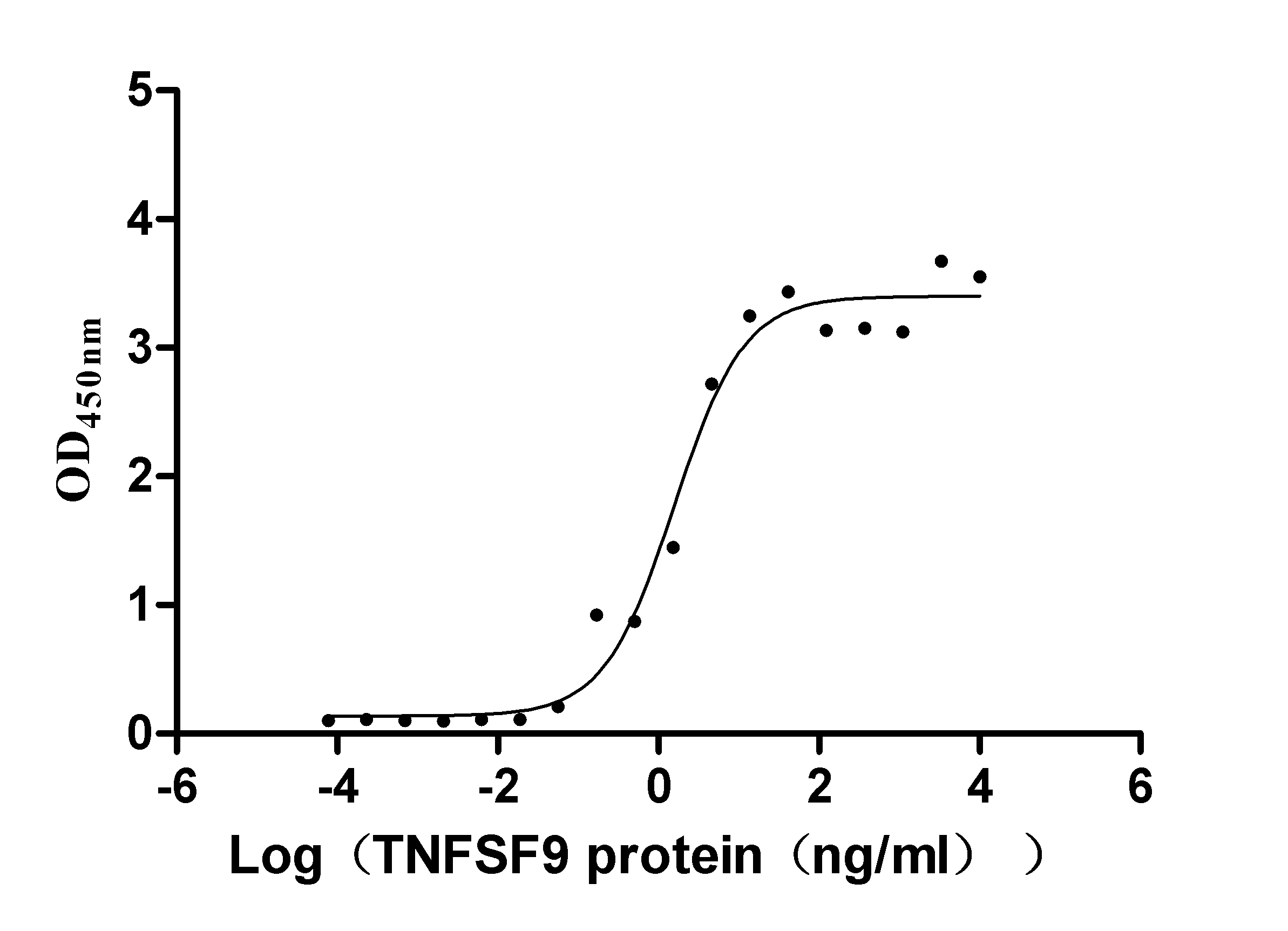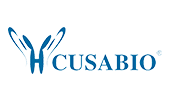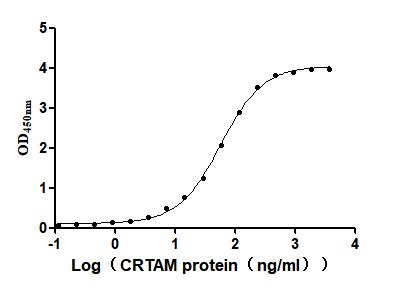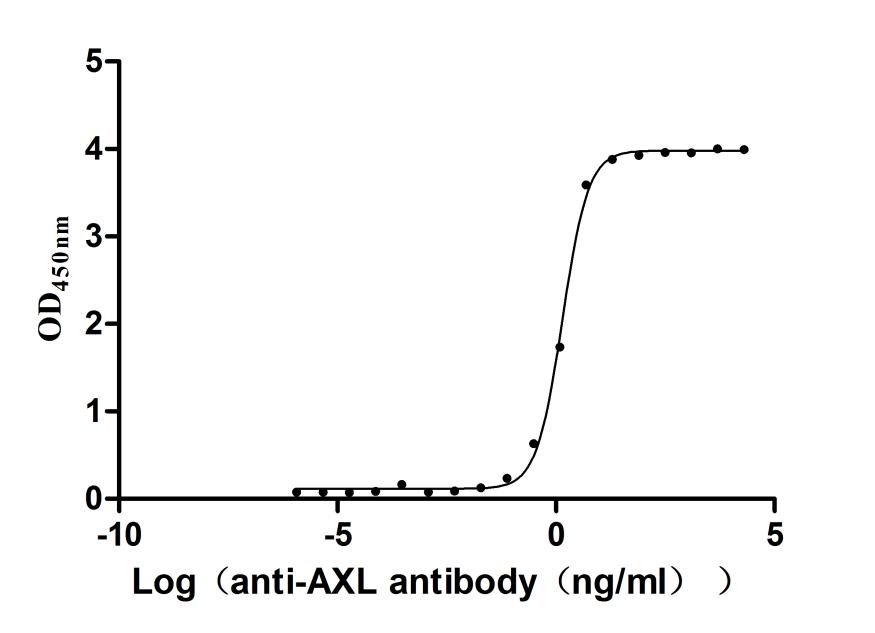Recombinant Human N-myc-interactor (NMI), partial
In Stock-
中文名稱:人NMI重組蛋白
-
貨號(hào):CSB-EP618768HU1
-
規(guī)格:¥1536
-
圖片:
-
其他:
產(chǎn)品詳情
-
純度:Greater than 85% as determined by SDS-PAGE.
-
基因名:
-
Uniprot No.:
-
種屬:Homo sapiens (Human)
-
蛋白長(zhǎng)度:Partial
-
來(lái)源:E.coli
-
分子量:51.1 kDa
-
表達(dá)區(qū)域:62-202aa
-
氨基酸序列EDIPETKMKFLSVETPENDSQLSNISCSFQVSSKVPYEIQKGQALITFEKEEVAQNVVSMSKHHVQIKDVNLEVTAKPVPLNSGVRFQVYVEVSKMKINVTEIPDTLREDQMRDKLELSFSKSRNGGGEVDRVDYDRQSGS
Note: The complete sequence may include tag sequence, target protein sequence, linker sequence and extra sequence that is translated with the protein sequence for the purpose(s) of secretion, stability, solubility, etc.
If the exact amino acid sequence of this recombinant protein is critical to your application, please explicitly request the full and complete sequence of this protein before ordering. -
蛋白標(biāo)簽:N-terminal 10xHis-GST-tagged and C-terminal Myc-tagged
-
產(chǎn)品提供形式:Liquid or Lyophilized powder
Note: We will preferentially ship the format that we have in stock, however, if you have any special requirement for the format, please remark your requirement when placing the order, we will prepare according to your demand. -
緩沖液:If the delivery form is liquid, the default storage buffer is Tris/PBS-based buffer, 5%-50% glycerol. If the delivery form is lyophilized powder, the buffer before lyophilization is Tris/PBS-based buffer, 6% Trehalose.
-
復(fù)溶:We recommend that this vial be briefly centrifuged prior to opening to bring the contents to the bottom. Please reconstitute protein in deionized sterile water to a concentration of 0.1-1.0 mg/mL.We recommend to add 5-50% of glycerol (final concentration) and aliquot for long-term storage at -20℃/-80℃. Our default final concentration of glycerol is 50%. Customers could use it as reference.
-
儲(chǔ)存條件:Store at -20°C/-80°C upon receipt, aliquoting is necessary for mutiple use. Avoid repeated freeze-thaw cycles.
-
保質(zhì)期:The shelf life is related to many factors, storage state, buffer ingredients, storage temperature and the stability of the protein itself.
Generally, the shelf life of liquid form is 6 months at -20°C/-80°C. The shelf life of lyophilized form is 12 months at -20°C/-80°C. -
貨期:3-7 business days
-
注意事項(xiàng):Repeated freezing and thawing is not recommended. Store working aliquots at 4°C for up to one week.
-
Datasheet & COA:Please contact us to get it.
相關(guān)產(chǎn)品
靶點(diǎn)詳情
-
功能:Acts as a signaling pathway regulator involved in innate immune system response. In response to interleukin 2/IL2 and interferon IFN-gamma/IFNG, interacts with signal transducer and activator of transcription/STAT which activate the transcription of downstream genes involved in a multitude of signals for development and homeostasis. Enhances the recruitment of CBP/p300 coactivators to STAT1 and STAT5, resulting in increased STAT1- and STAT5-dependent transcription. In response to interferon IFN-alpha, associates in a complex with signaling pathway regulator IFI35 to regulate immune response; the complex formation prevents proteasome-mediated degradation of IFI35. In complex with IFI35, inhibits virus-triggered type I IFN-beta production when ubiquitinated by ubiquitin-protein ligase TRIM21. In complex with IFI35, negatively regulates nuclear factor NF-kappa-B signaling by inhibiting the nuclear translocation, activation and transcription of NF-kappa-B subunit p65/RELA, resulting in the inhibition of endothelial cell proliferation, migration and re-endothelialization of injured arteries. Negatively regulates virus-triggered type I interferon/IFN production by inducing proteosome-dependent degradation of IRF7, a transcriptional regulator of type I IFN, thereby interfering with cellular antiviral responses. Beside its role as an intracellular signaling pathway regulator, also functions extracellularly as damage-associated molecular patterns (DAMPs) to promote inflammation, when actively released by macrophage to the extracellular space during cell injury or pathogen invasion. Macrophage-secreted NMI activates NF-kappa-B signaling in adjacent macrophages through Toll-like receptor 4/TLR4 binding and activation, thereby inducing NF-kappa-B translocation from the cytoplasm into the nucleus which promotes the release of proinflammatory cytokines.
-
基因功能參考文獻(xiàn):
- These results revealed that IRF-1 is involved in the IFN-inducible expression of Nmi. PMID: 28913576
- Our study showed that NMI suppressed tumor growth by inhibiting PI3K/AKT, MMP2/MMP9, COX-2/PGE2 signaling pathways and p300-mediated NF-kappaB acetylation, and predicted a favorable prognosis in human lung adenocarcinomas, suggesting that NMI was a potential tumor suppressor in lung cancer. PMID: 29025423
- results provide new insights into understanding the regulatory mechanism of cancer stem cells and suggest that the NMI-YY1-hTERT signaling axis may be a potential therapeutic target for breast cancers. PMID: 28492540
- Damage-associated molecular patterns (DAMP) are important mediators of innate immunity. Here the authors show that N-myc and STAT interactor (NMI) and interferon-induced protein 35 (IFP35) act as DAMPs to promote inflammation by activating macrophages via the Toll-like receptor 4 and NF-kappaB pathways. PMID: 29038465
- These investigations demonstrated etoposide-induced NMI can suppress tumor proliferation and promote cell apoptosis by activating the ARF-p53 signaling pathway in lung carcinoma. Our results provide an alternative mechanism for etoposide in lung carcinoma and suggest NMI has a critical role in suppressing lung carcinoma progression. PMID: 29030066
- Data suggest that N-myc (and STAT) interactor (NMI) could improve its downstream target bradykinin B2 receptor (BDKRB2) expression to induce extracellular signal-regulated kinases (ERK) 1/2 activation, and thereby further evoke malignant progression of hepatocellular carcinoma (HCC). PMID: 28077802
- N-Myc-interacting protein (NMI) negatively regulates epithelial-mesenchymal transition by inhibiting the acetylation of NF-kappaB/p65 in histone deacetylase-dependent manner. PMID: 27012186
- N-myc and STAT interactor sensitizes breast cancer cells to cisplatin treatment through DRAM1 dependent autophagy. PMID: 26146406
- Results show that aberrant miR-29 expression may account for reduced NMI expression in breast tumors and mesenchymal phenotype of cancer cells that promotes invasive growth. PMID: 25174825
- The results showed that SARS coronavirus protein 6 can promote the ubiquitin-dependent proteosomal degradation of Nmi. PMID: 25907116
- overexpression or depletion of NMI revealed its regulation on G1/S progression and cell proliferation (both in vitro and in vivo), and this effect was partially dependent on STAT1, which interacted with and was regulated by NMI. PMID: 25669971
- Trim21 regulates Nmi-IFI35 complex-mediated inhibition of innate antiviral response PMID: 26342464
- Its potential function in transcriptional activation of NMI. PMID: 25387807
- identified NMI induction as a novel negative feedback mechanism that decreases IRE1alpha-dependent activation of JNK and apoptosis in cytokine-exposed beta cells PMID: 24936061
- Thus our work reveals a novel NMI-mediated, transcription-independent ARF induction pathway in response to cellular stresses. PMID: 23034180
- Dissociation of the IFN-induced protein NMI from IFP35 is a newly defined specific cytoplasmic event occurring during apoptosis. PMID: 11911807
- complex with BRCA1 and c-Myc inhibits c-Myc-induced human telomerase reverse transcriptase gene promoter activity in breast cancer PMID: 11916966
- Apoptin mutant T1 still interacted with Nmi, suggesting that its C-terminal 11 AA was not essential for the interaction. PMID: 12019454
- STAT1 and Nmi are downstream targets of Ets-1 in MCF-7 human breast cancer cells PMID: 15996661
- identified an association of Sox10 with the N-myc interactor Nmi, which was mediated by the high-mobility group of Sox10 and the central region of Nmi; Nmi modulated the transcriptional activity of Sox10 PMID: 16214168
- The results provide a novel role of CKIP-1 in cytokine signaling response and the biochemical mechanism, by which two previously identified modulators IFP35 and Nmi are involved via interactions. PMID: 17197158
- Activation of PKCdelta in response to Camptothecin treatment requires Myc and is important in CPT-mediated apoptosis signaling. PMID: 17565738
- Data suggest that overexpression of Nmi inhibits the Wnt/beta-catenin signaling via up-regulation of Dkk1 and retards tumor growth. PMID: 19358268
顯示更多
收起更多
-
亞細(xì)胞定位:Cytoplasm. Nucleus. Secreted.
-
蛋白家族:NMI family
-
組織特異性:Expressed in adult spleen, liver, and kidney. Expressed in fetal thymus, liver, placenta, spleen, lung, and kidney but not brain. Expressed in macrophages.
-
數(shù)據(jù)庫(kù)鏈接:
Most popular with customers
-
Recombinant Human Tumor necrosis factor receptor superfamily member 9 (TNFRSF9), partial (Active)
Express system: Mammalian cell
Species: Homo sapiens (Human)
-
Recombinant Rat Intestinal-type alkaline phosphatase 1 (Alpi) (Active)
Express system: Mammalian cell
Species: Rattus norvegicus (Rat)
-
Recombinant Mouse Cytotoxic and regulatory T-cell molecule (Crtam), partial (Active)
Express system: Mammalian cell
Species: Mus musculus (Mouse)
-
Recombinant Human Carcinoembryonic antigen-related cell adhesion molecule 8(CEACAM8) (Active)
Express system: Mammalian cell
Species: Homo sapiens (Human)
-
Recombinant Human Tyrosine-protein kinase receptor UFO(AXL),partial (Active)
Express system: Mammalian cell
Species: Homo sapiens (Human)

















